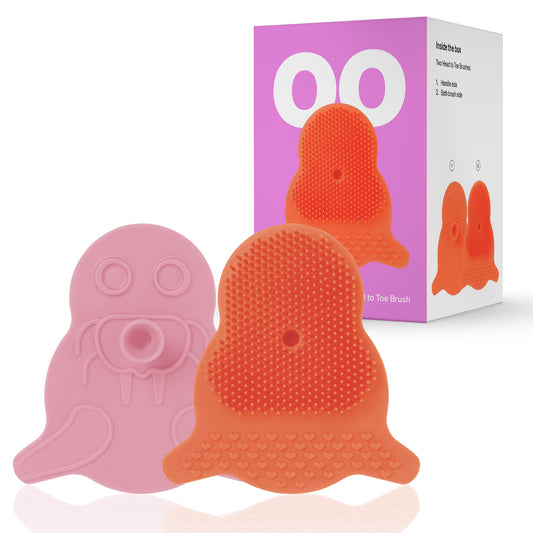What is cradle cap?
If you're a new parent, you may have noticed a weird, scaly patch on your baby's scalp. This is called cradle cap, and it's actually pretty common with babies’ scalp. Baby cradle cap is a form of skin seborrheic dermatitis, which is a type of scalp skin inflammation. Symptoms usually starts around 3-6 months old, and it can last for several months for the child (or even years).
Causes of cradle cap
Cradle cap is thought to be caused by an overproduction of oil on the scalp skin. This can be due to hormones that are still present from pregnancy, or it could be a response of the skin to new foods that the baby is eating. In most cases, cradle cap is not harmful for the health of the baby or child and symptoms usually go away on its own without treatment.
How to treat cradle cap
There are a few things you can do to help speed up the process for the baby or child, though. The best way to treat cradle cap is to use gentle shampooing and brushing to loosen and remove the scales from your baby’s scalp. Start by brushing your baby’s hair with a soft brush or comb before shampooing. After shampooing, use your fingers or a soft brush to loosen and remove the scales from the baby or child for scalp health. You can also apply some natural oils such as olive oil or coconut oil to your baby’s scalp before shampooing, as this will help loosen the scales. It’s important to note that you should never pick at or scratch your baby’s scalp, as this can cause irritation and potential infection. If your baby’s cradle cap persists despite home remedies, consult with your doctor who may suggest topical steroid creams or shampoos specifically designed for cradle cap treatment.
Prevention Tips
Though it often goes away on its own within a few months without treatment, there are steps parents can take to prevent cradle cap from occurring with the baby or child in the first place:
-Keep your baby's head skin clean by regularly washing their hair with mild soap or shampoo
-Gently brush their hair every day -Avoid using tight hats or headbands on them
-Make sure their skin remains moisturized by applying natural oils such as coconut oil after baths
-Ensure that they're getting enough Vitamin A (found in carrots, sweet potatoes, spinach) in their diet
-Be sure they're not exposed to too much humidity. By following these preventive tips, parents can help ensure that their babies or children won't experience any discomfort on the scalp due to cradle cap.


